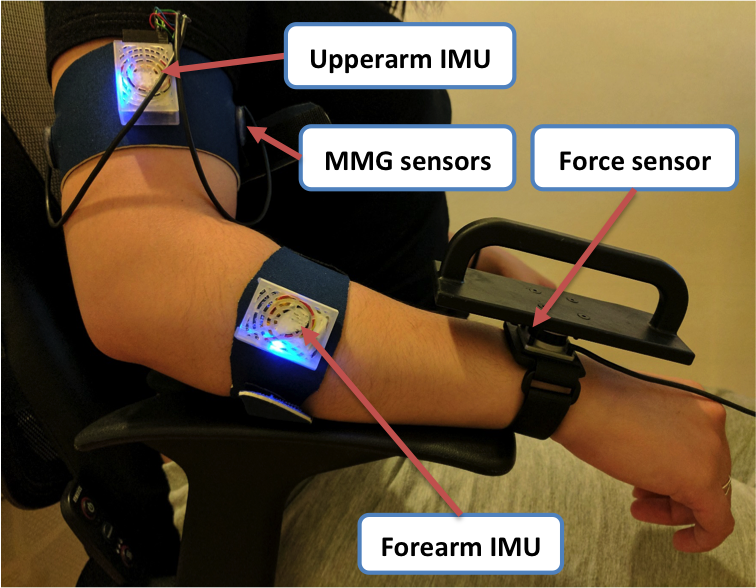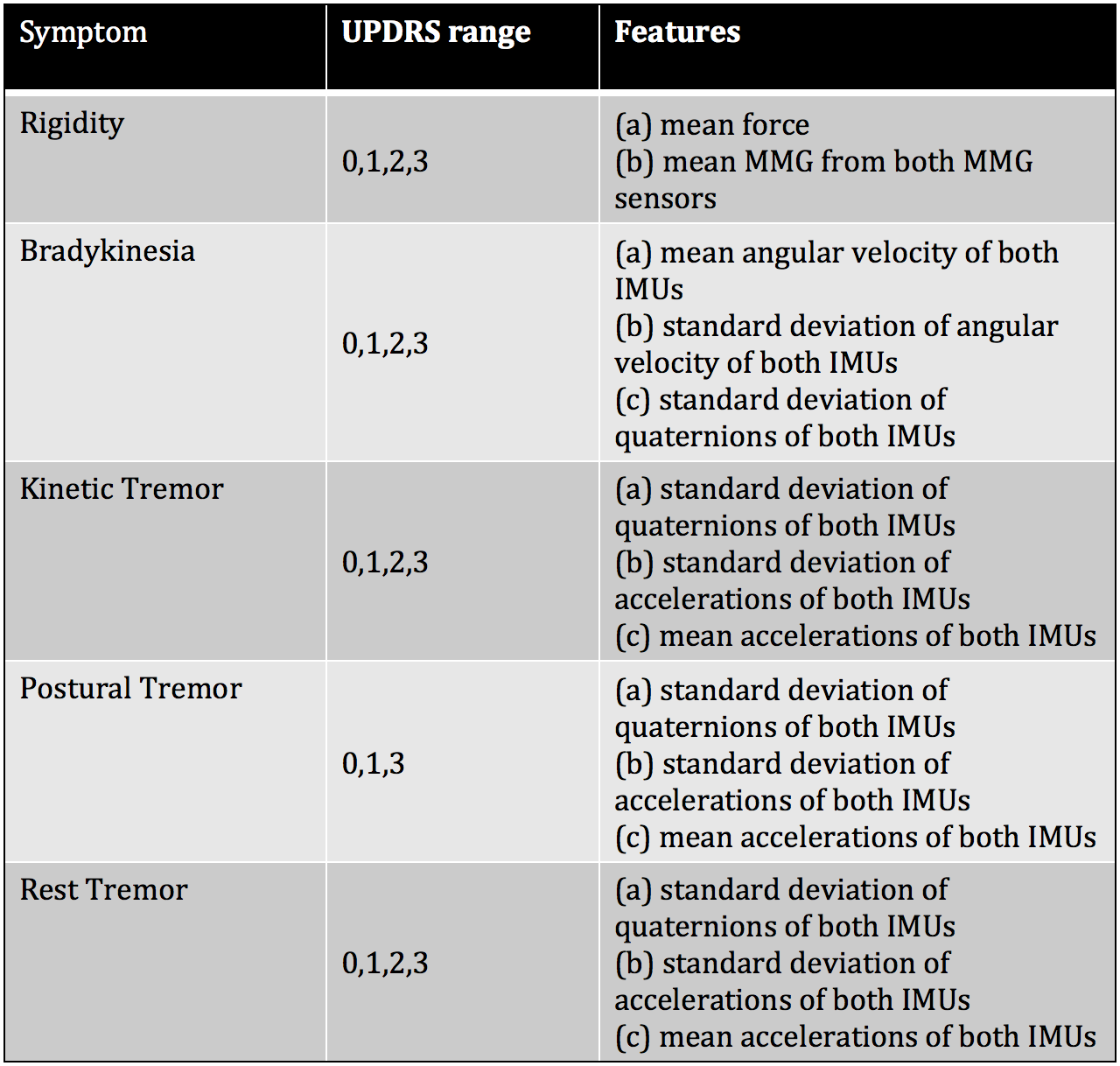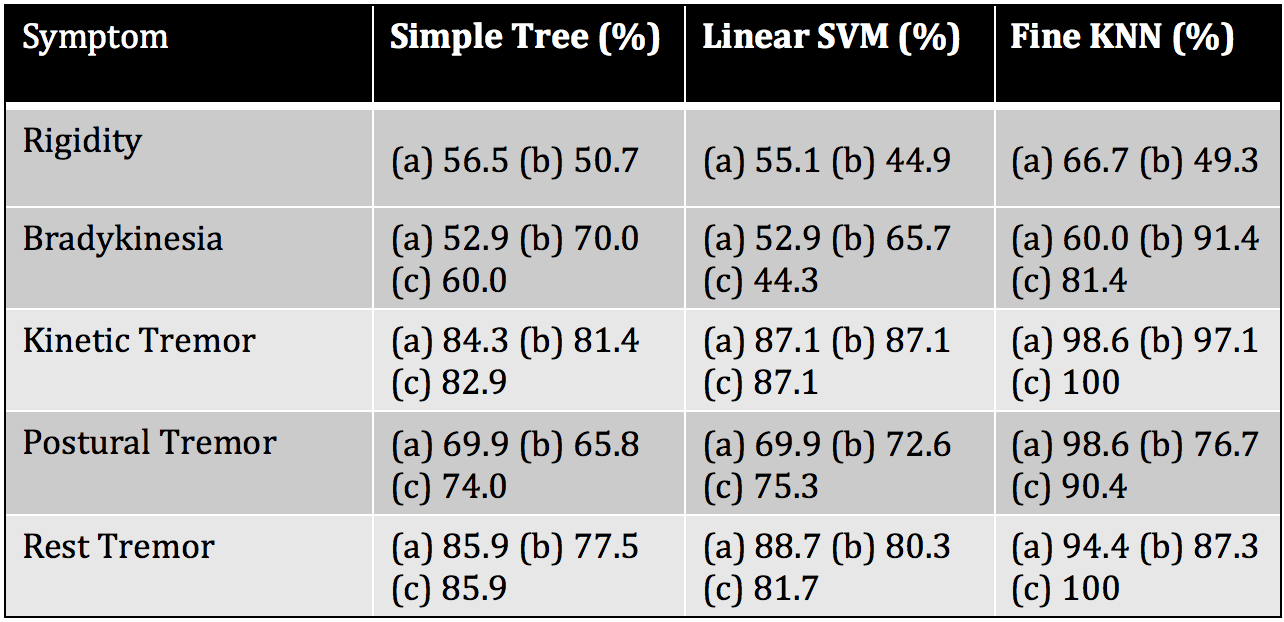Session Information
Date: Tuesday, June 6, 2017
Session Title: Technology
Session Time: 1:45pm-3:15pm
Location: Exhibit Hall C
Objective: Implantable brain stimulators are now an established method of treating Parkinson’s Disease (PD). Determination of optimal neural stimulation parameters is complex and clinically demanding. The goal of this work is to develop a wearable sensor system to determine the optimum amount of treatment that should be given based on the severity of their symptoms. A necessary step in optimising the amount of treatment is to firstly quantify the severity of symptoms.
Background: Sensor-based assessments for one or two of the primary symptoms of Parkinson’s disease have been documented but a sensor system that quantifies three of the primary symptoms using supervised learning and that has been tested on patients has yet to be explored [1]. The system uses two motion sensors, two muscle activity (mechanomyographic, MMG) sensors and one force sensor [Figure 1].
Methods: Trials were conducted on 13 PD subjects receiving DBS treatment and 3 healthy subjects. Subjects sat with the system attached to one of their arms (the most severely affected arm for PD subjects). The arm was then assessed and each assessment during this trial was repeated 3 times. The following assessments (demonstrated in [Figure 2]) were used:
Rigidity – Cogwheel movement of the arm by the clinician (5 repetitions)
Bradykinesia – Pronate and supinate the wrist (5 repetitions)
Kinetic tremor – Index finger on nose to clinician’s finger and back (5 repetitions)
Postural tremor – Hold arm straight out for 10 seconds
Rest tremor – Rest arms on lap for 10 seconds
A clinician fed back the UPDRS score for each assessment. The UPDRS score was used to draw correlations from the severity of the subject’s symptoms and the sensor data collected. Simple trees, linear support vector machines and fine k-nearest neighbours were used to assess correlations. A cross-validation with 5 folds was used to validate the models created.
Results: The UPDRS score was used as the response for the models. The range of UPDRS and predictors (features) used for each symptom are given in [Table 1] and the validation results from the models are given in [Table 2].
Conclusions: The sensor system has so far been tested on 16 subjects and results show that the system is able to relate sensor data to UPDRS scores through machine learning models. The k-nearest neighbours model usually performed best (average 85.1 % successful classification).
References: [1] Dai, H., Otten, B., Mehrkens, J.H., D’Angelo, L.T., Lueth, T.C.: A novel glove monitoring system used to quantify neurological symptoms during deep-brain stimulation surgery. IEEE Sens. J. 13(9), 3193–3202 (2013)
To cite this abstract in AMA style:
P. Angeles, Y. Tai, N. Pavese, R. Vaidyanathan. Assessing Parkinson’s disease motor symptoms using supervised learning algorithms [abstract]. Mov Disord. 2017; 32 (suppl 2). https://www.mdsabstracts.org/abstract/assessing-parkinsons-disease-motor-symptoms-using-supervised-learning-algorithms/. Accessed April 26, 2025.« Back to 2017 International Congress
MDS Abstracts - https://www.mdsabstracts.org/abstract/assessing-parkinsons-disease-motor-symptoms-using-supervised-learning-algorithms/




